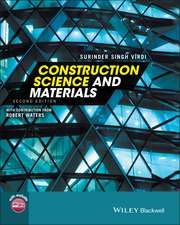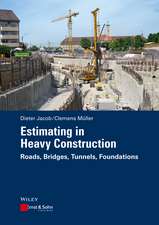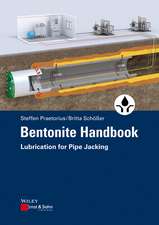Structural Reliability Theory and Its Applications
Autor P. Thoft-Cristensen, M. J. Bakeren Limba Engleză Paperback – 10 dec 2011
Preț: 586.74 lei
Preț vechi: 690.28 lei
-15% Nou
Puncte Express: 880
Preț estimativ în valută:
112.28€ • 120.06$ • 93.61£
112.28€ • 120.06$ • 93.61£
Carte tipărită la comandă
Livrare economică 18 aprilie-02 mai
Preluare comenzi: 021 569.72.76
Specificații
ISBN-13: 9783642686993
ISBN-10: 3642686990
Pagini: 284
Ilustrații: XIV, 268 p.
Dimensiuni: 170 x 244 x 15 mm
Greutate: 0.5 kg
Ediția:Softcover reprint of the original 1st ed. 1982
Editura: Springer Berlin, Heidelberg
Colecția Springer
Locul publicării:Berlin, Heidelberg, Germany
ISBN-10: 3642686990
Pagini: 284
Ilustrații: XIV, 268 p.
Dimensiuni: 170 x 244 x 15 mm
Greutate: 0.5 kg
Ediția:Softcover reprint of the original 1st ed. 1982
Editura: Springer Berlin, Heidelberg
Colecția Springer
Locul publicării:Berlin, Heidelberg, Germany
Public țintă
ResearchCuprins
1. The Treatment of Uncertainties in Structural Engineering.- 1.1 Introduction.- 1.2 Uncertainty.- 1.3 Structural Reliability Analysis and Safety Checking.- 2. Fundamentals of Probability Theory.- 2.1 Introduction.- 2.2 Sample Space.- 2.3 Axioms and Theorems of Probability Theory.- 2.4 Random Variables.- 2.5 Moments.- 2.6 Univariate Distributions.- 2.7 Random Vectors.- 2.8 Conditional Distributions.- 2.9 Functions of Random Variables.- 3. Probabilistic Models for Loads and Resistance Variables.- 3.1 Introduction.- 3.2 Statistical Theory Of Extremes.- 3.3 Asymptotic Extreme-Value Distributions.- 3.4 Modelling of Resistance Variables - Model Selection.- 3.5 Modelling of Load Variables - Model Selection.- 3.6 Estimation of Distribution Parameters.- 3.7 Inclusion of Statistical Uncertainty.- 4. Fundamentals of Structural Reliability Theory.- 4.1 Introduction.- 4.2 Elements of Classical Reliability Theory.- 4.3 Structural Reliability Analysis.- 5. Level 2 Methods.- 5.1 Introduction.- 5.2 Basic Variables and Failure Surfaces.- 5.3 Reliability Index for Linear Failure Functions and Normal Basic Variables.- 5.4 Hasofer and Lind’s Reliability Index.- 6. Extended Level 2 Methods.- 6.1 Introduction.- 6.2 Concept of Correlation.- 6.3 Correlated Basic Variables.- 6.4 Non-Normal Basic Variables.- 7. Reliability of Structural Systems.- 7.1 Introduction.- 7.2 Perfectly Brittle and Perfectly Ductile Elements.- 7.3 Fundamental Systems.- 7.4 Systems with Equally Correlated Elements.- 8. Reliability Bounds for Structural Systems.- 8.1 Introduction.- 8.2 Simple Bounds.- 8.3 Ditlevsen Bounds.- 8.4 Parallel Systems with Unequally Correlated Elements.- 8.5 Series Systems with Unequally Correlated Elements.- 9. Introduction to Stochastic Process Theory and its Uses.- 9.1 Introduction.- 9.2Stochastic Processes.- 9.3 Gaussian Processes.- 9.4 Barrier Crossing Problem.- 9.5 Peak Distribution.- 10. Load Combinations.- 10.1 Introduction.- 10.2 The Load Combination Problem.- 10.3 The Ferry Borges-Castanheta Load Model.- 10.4 Combination Rules.- 11. Applications to Structural Codes.- 11.1 Introduction.- 11.2 Structural Safety and Level 1 Codes.- 11.3 Recommended Safety Formats for Level 1 Codes.- 11.4 Methods for the Evaluation of Partial Coefficients.- 11.5 An Example of Probabilistic Code Calibration.- 12. Applications to Fixed Offshore Structures.- 12.1 Introduction.- 12.2 Modelling the Response of Jacket Structures for ReliaBility Analysis.- 12.3 Probability Distributions for Important Loading Variables.- 12.4 Methods of Reliability Analysis.- 12.5 Some Results from the Study of a Jacket Structure.- 13. Reliability Theory and Quality Assurance.- 13.1 Introduction.- 13.2 Gross Errors.- 13.3 Interaction of Reliability and Quality Assurance.- 13.4 Quality Assurance.- Appendix A. Random Number Generators.- 1. General.- 2. Uniform Random Number Generators.- 3. Multiplicative Congruence Method.- 5. Special Cases: Generation of Random Deviates Having Normal and Log-Normal Distributions.- Appendix B. Spectral Analysis of Wave Forces.- 1. Introduction.- 2. General Equations of Motion.- 3. Modal Analysis.- 4. Solution Strategy.- 5. Multiple Piles.- 6. Computational Procedure.








